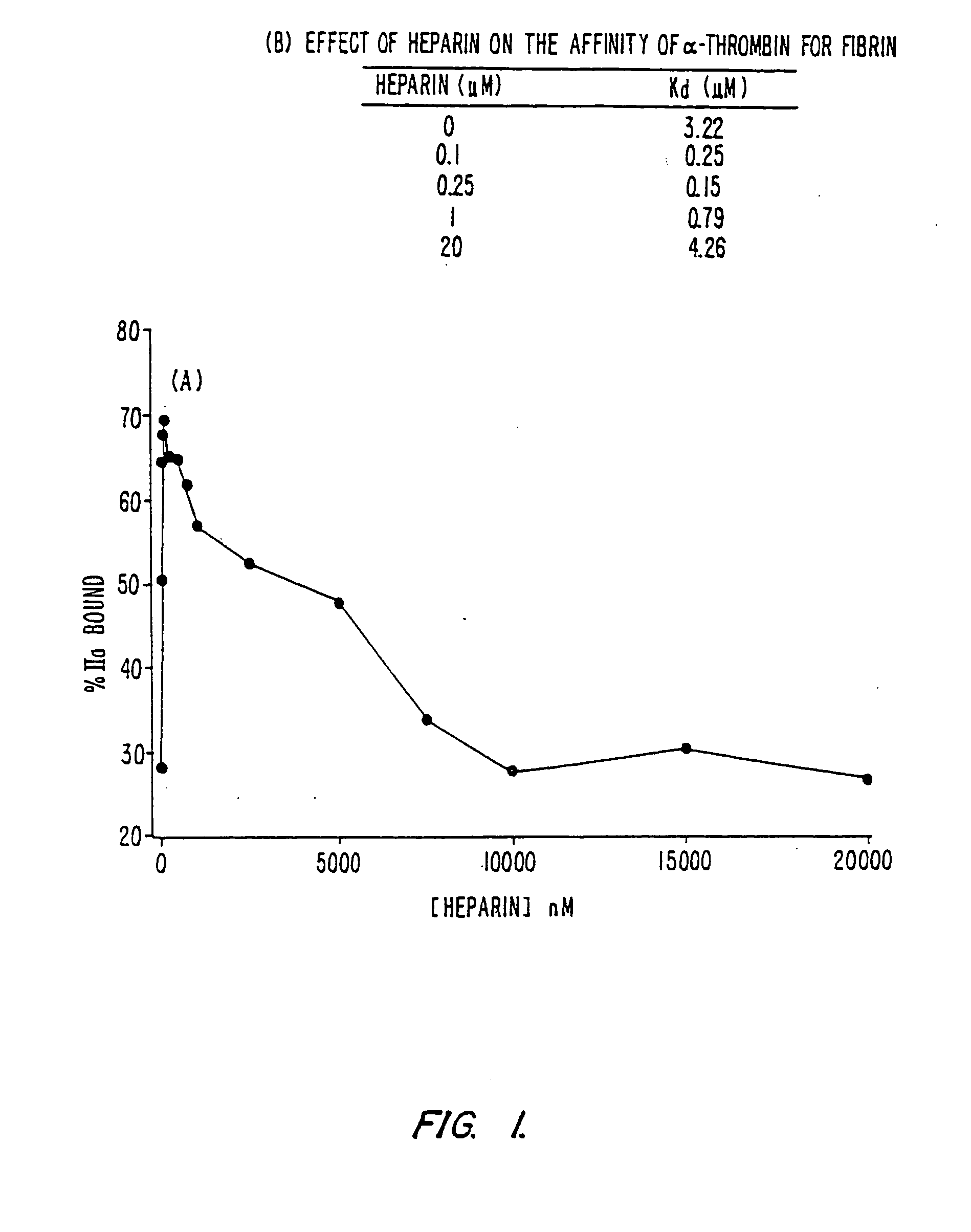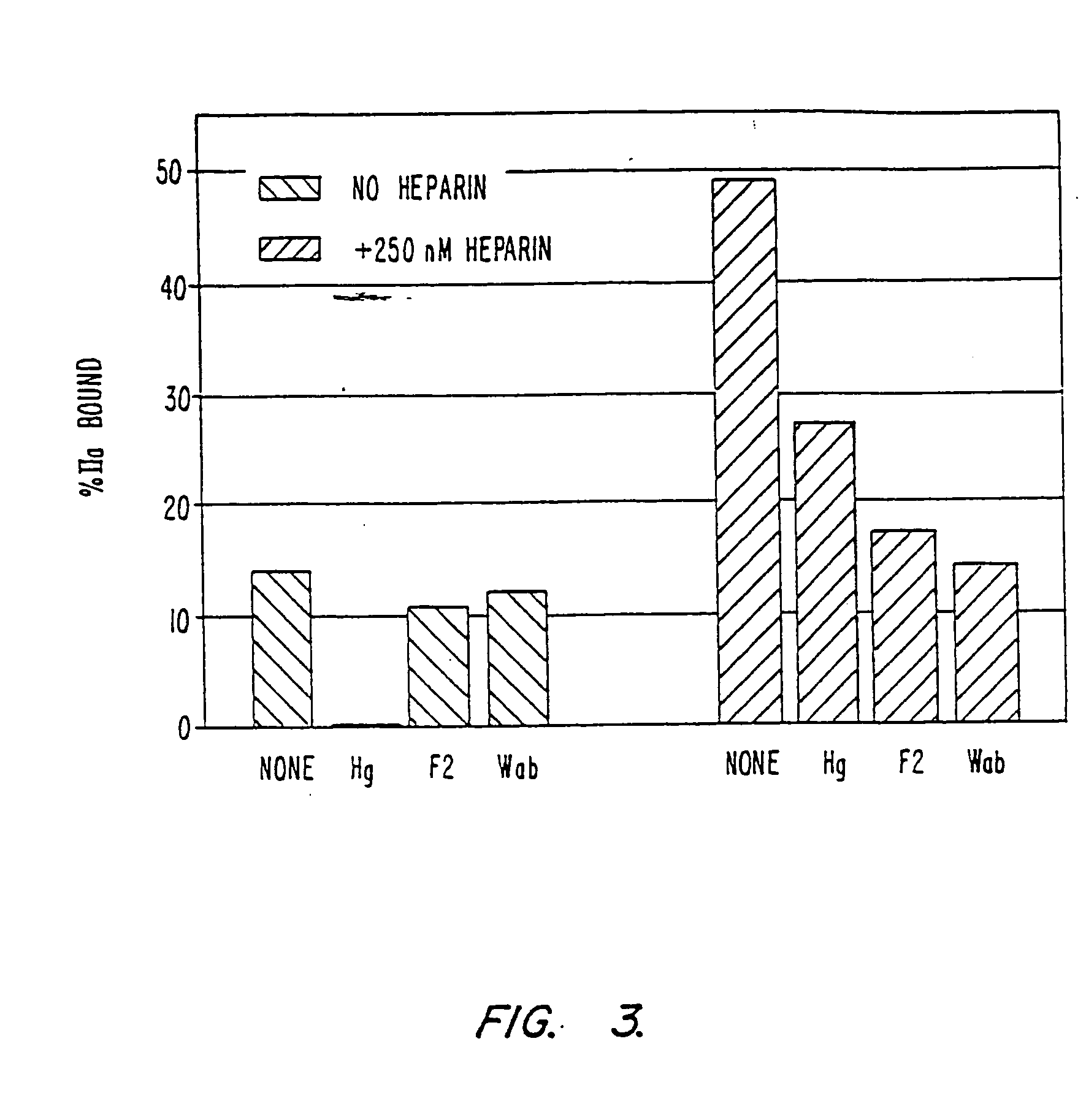Modified low molecular weight heparin that inhibits clot associated coagulation factors
a low molecular weight, heparin technology, applied in the field of compositions and methods, can solve the problems of too short to bridge antithrombin to thrombin, and achieve the effects of pacifying the thrombus, blocking the generation of thrombin, and preventing reactivation of coagulation
- Summary
- Abstract
- Description
- Claims
- Application Information
AI Technical Summary
Benefits of technology
Problems solved by technology
Method used
Image
Examples
examples
[0057] A. Preparation of Modified Low Molecular Weight Heparin (MLMWH)
[0058] A well-defined heparin 6,025 Da molecular weight compound was separated from low molecular weight heparin (LMWH) (Sigma Chemical Company, St. Louis, Mo.) by high-performance liquid chromatography on a Beckman Gold System (Mississauga, Ontario Canada) equipped with a model 126 solvent delivery system and a manual injector. The fractions were monitored with a Beckman model 167 variable wavelength absorbance detector at 205 nm and a Waters model 410 differential refractometer according to the method described by Nielsen (1992). The LMWH heparin was diluted in double deionized water and applied to the column. It was eluted with 0.5M Na2SO4. The heparin was first eluted from a SEC 3000 gel filtration column, 600×21.2 mm purchased from Phenomenex, Torrance, Calif. The sample was run at 3 ml / min and samples collected every minute. These samples were subsequently run over a G3000 SWXL TSK column, 30 cm X 7.9 mm fr...
PUM
| Property | Measurement | Unit |
|---|---|---|
| molecular weight | aaaaa | aaaaa |
| molecular weight | aaaaa | aaaaa |
| molecular weight | aaaaa | aaaaa |
Abstract
Description
Claims
Application Information
 Login to View More
Login to View More - R&D
- Intellectual Property
- Life Sciences
- Materials
- Tech Scout
- Unparalleled Data Quality
- Higher Quality Content
- 60% Fewer Hallucinations
Browse by: Latest US Patents, China's latest patents, Technical Efficacy Thesaurus, Application Domain, Technology Topic, Popular Technical Reports.
© 2025 PatSnap. All rights reserved.Legal|Privacy policy|Modern Slavery Act Transparency Statement|Sitemap|About US| Contact US: help@patsnap.com



